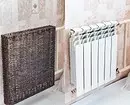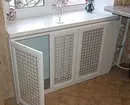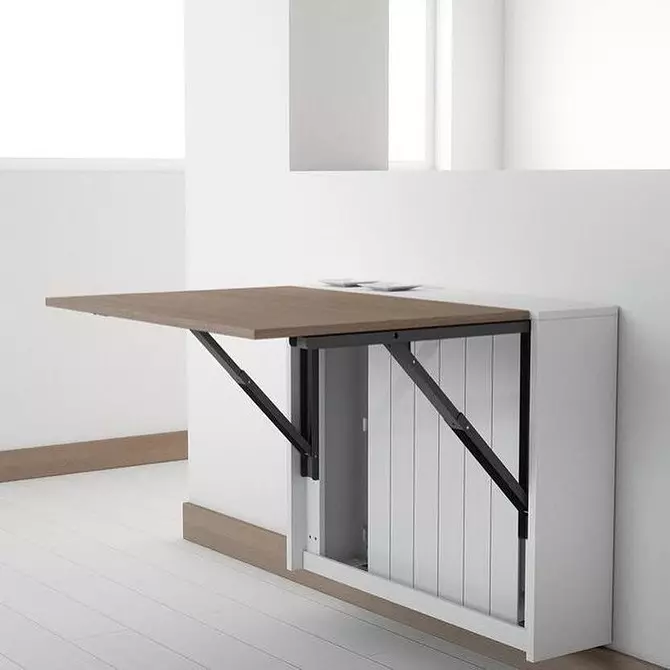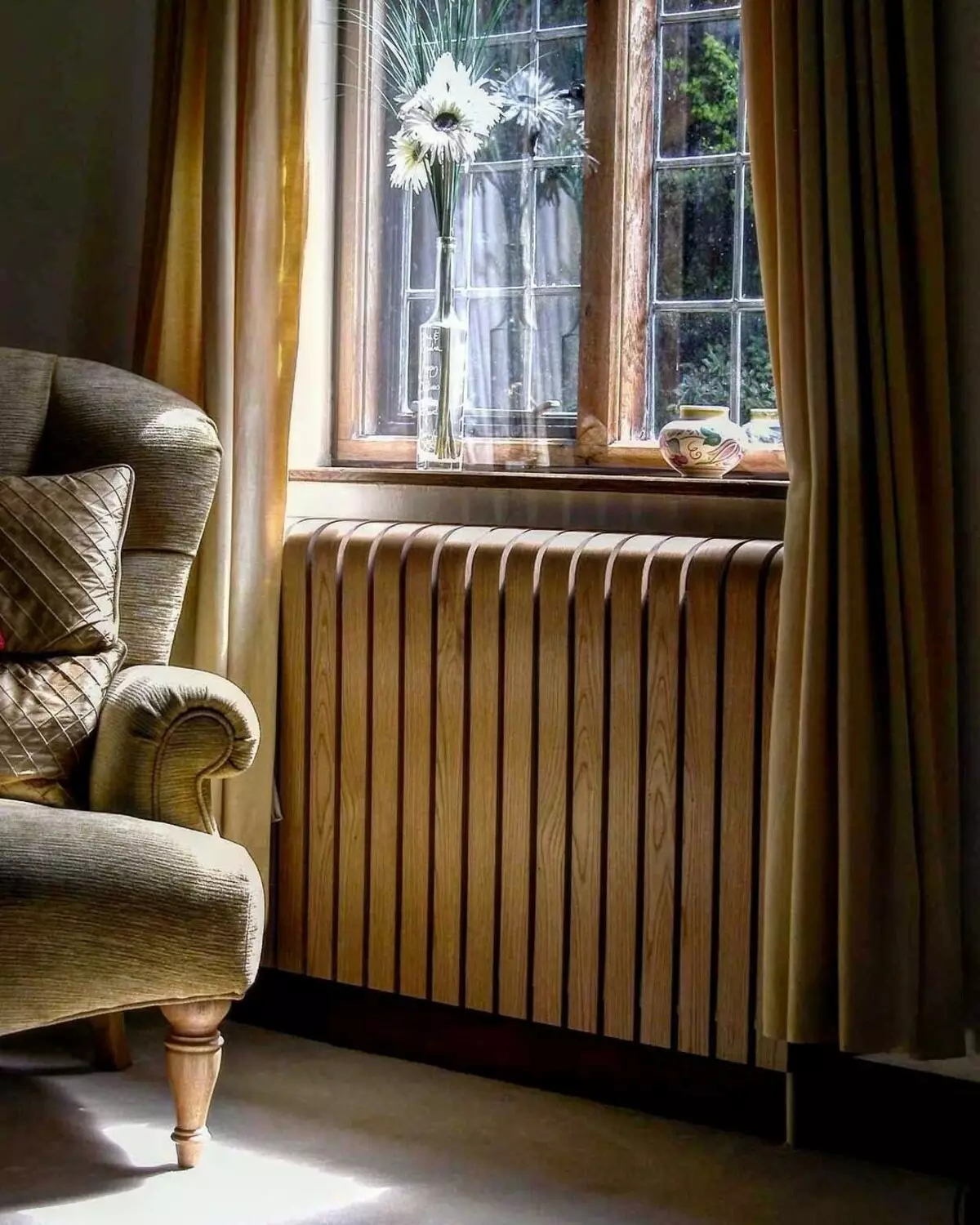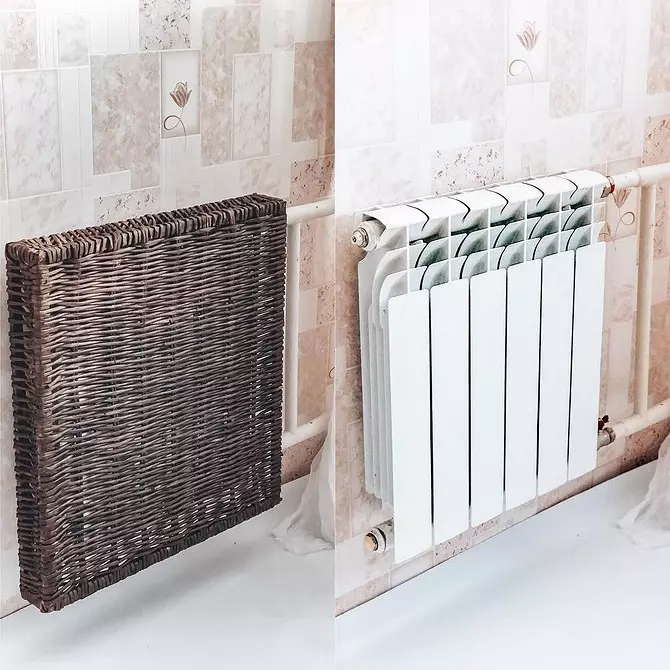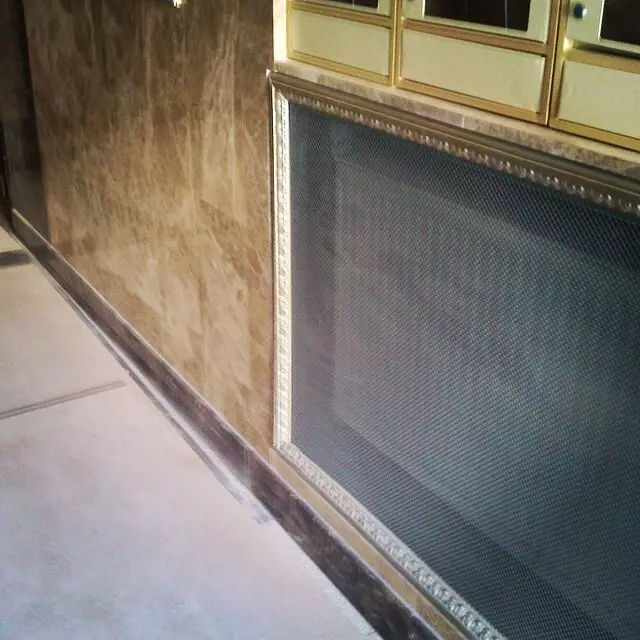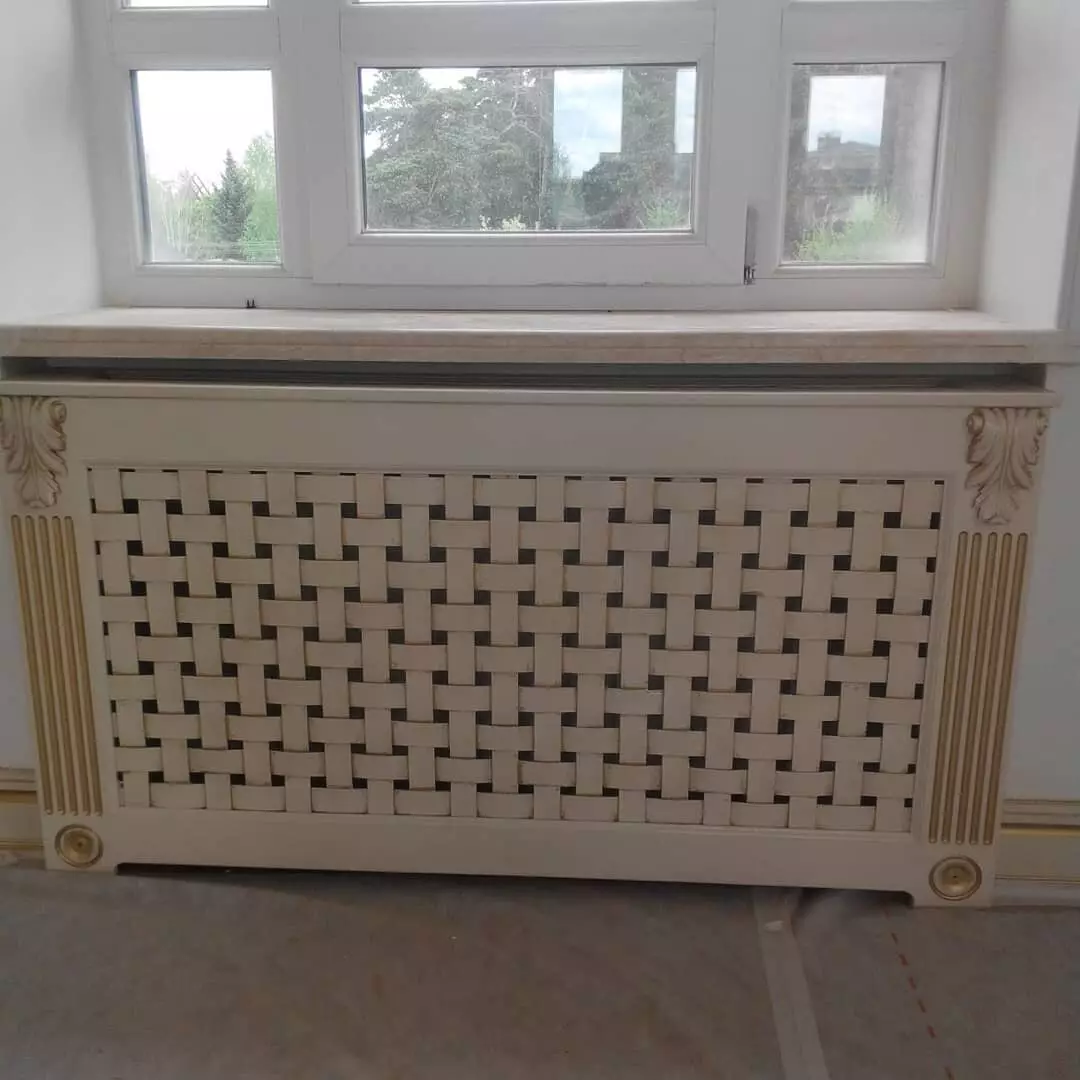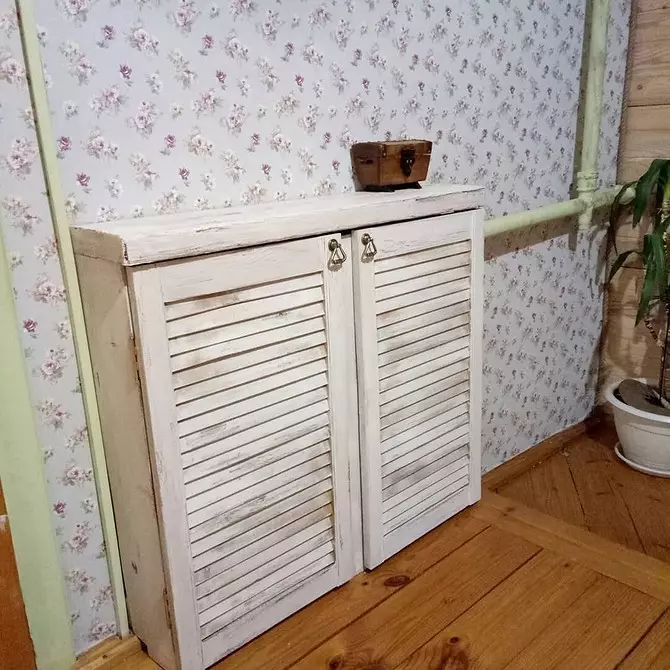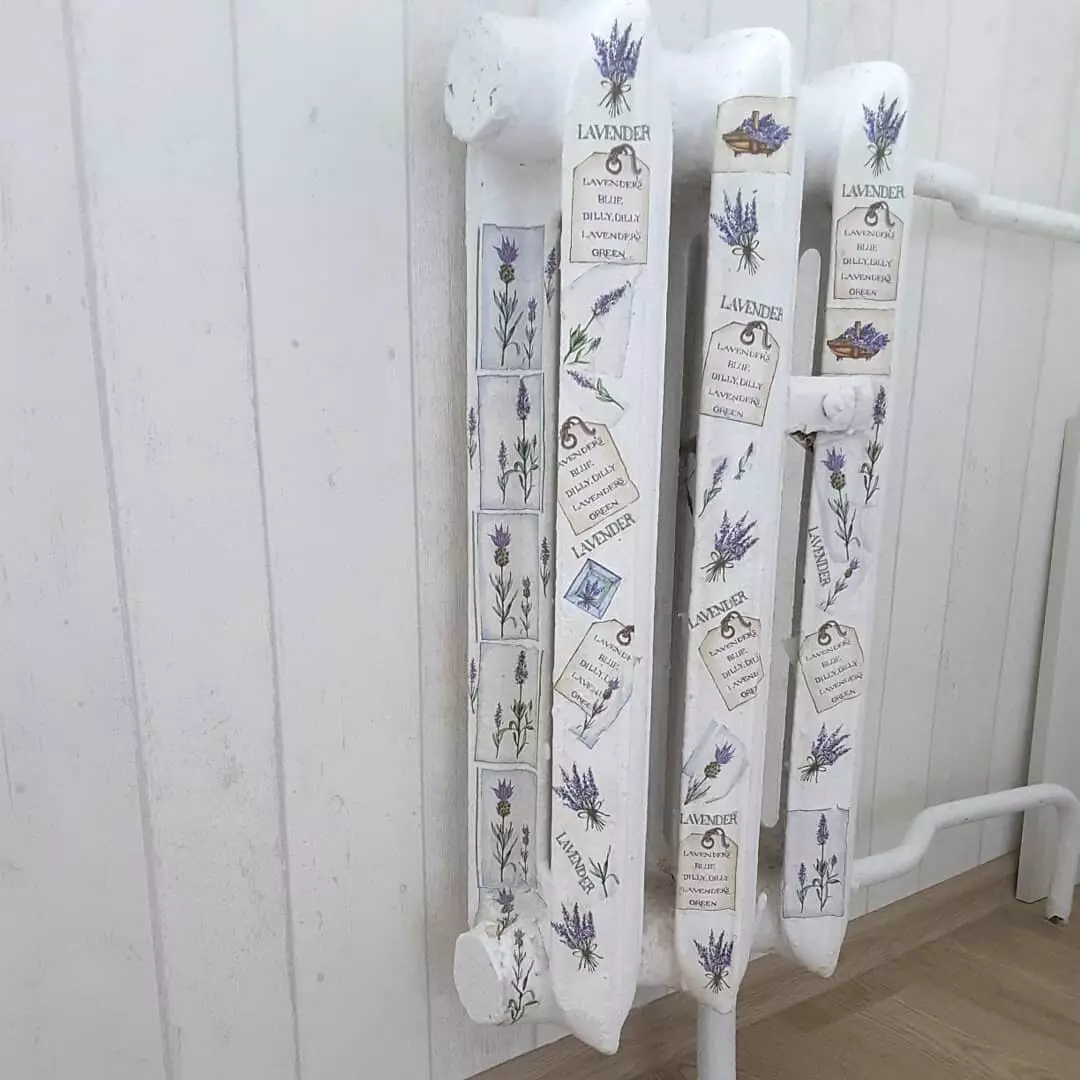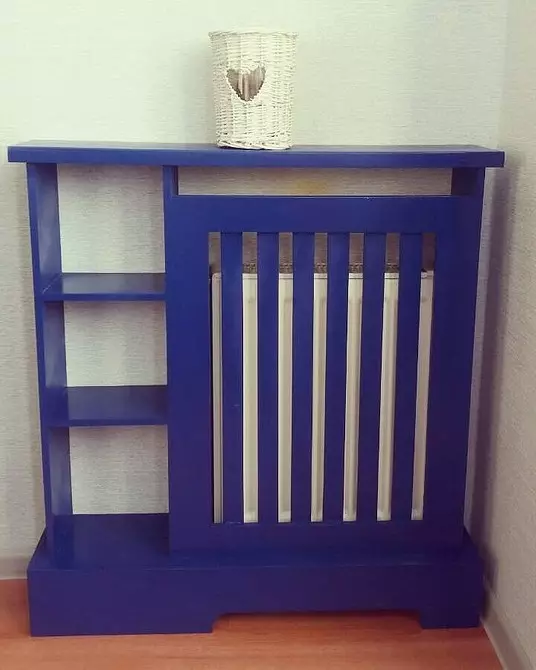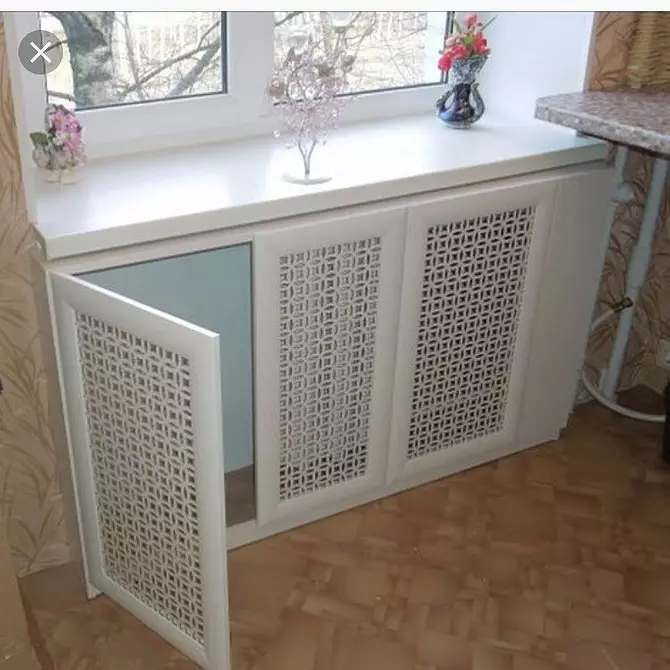Shirma, Furniture, Screen - We tell about these and other ways to disguise the heating radiator
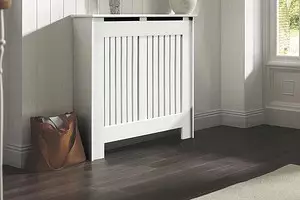
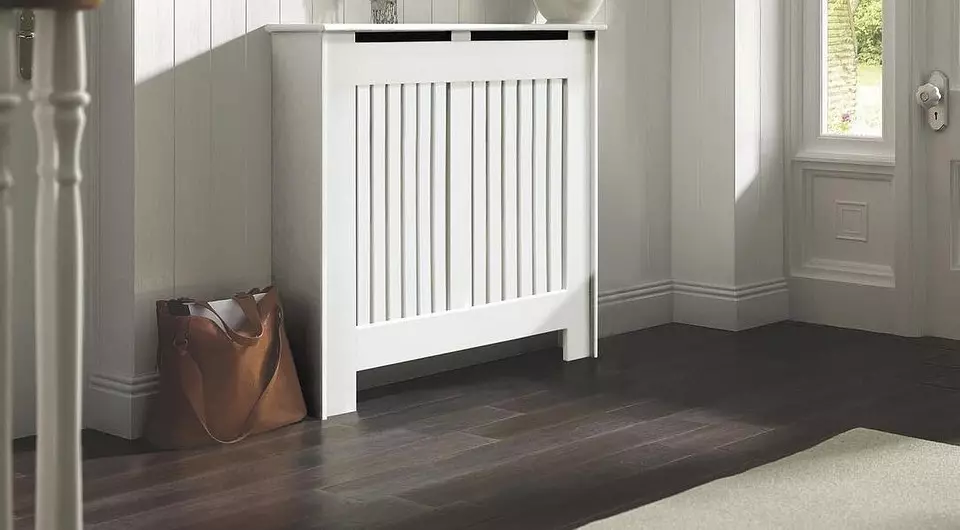
How to hide the radiator correctly:
Rules and advice
What to disguise the battery
- Purchased grilles and panels
- Plasterboard
- Painting
- the cloth
- Furniture
- Niche
- Grid
- Screen
Photos of screens, gratings, panels, covers
Beautifully disguise this part of the room simply - most of the structures can be installed on your own. The main difficulty lies in their choice. First of all, in the question, how and how to close the battery, you need to be guided by practical considerations. We will tell you what it is important to take into account when selecting a screen for a heating device.
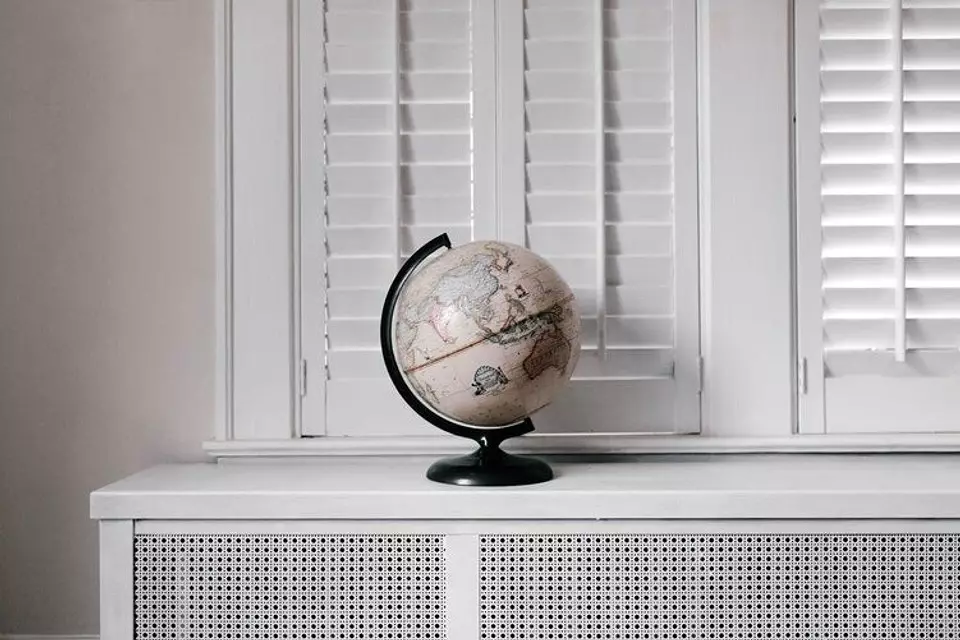
Technical rules
One of the requirements is the availability of the radiator. It can give to flow, it will have to be replaced or repaired. Therefore, it is better to choose designs that are easily removed. It is desirable that they do not have a fixed fastening. The lining with the hinge door, the retractable mechanism. At a minimum, in case the breakdowns must remain available to the valves, connecting places with pipes, thermal heads and threaded connections.


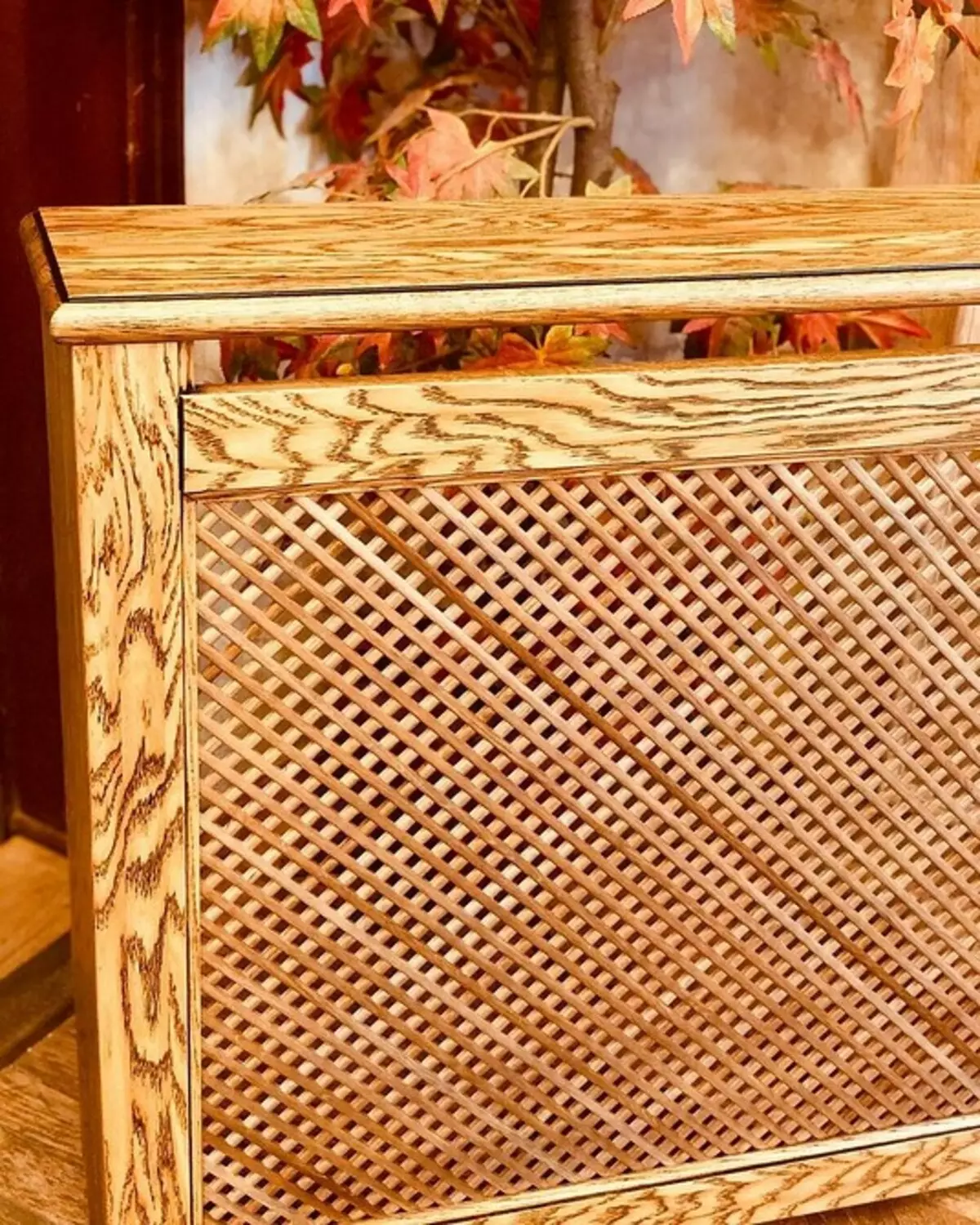
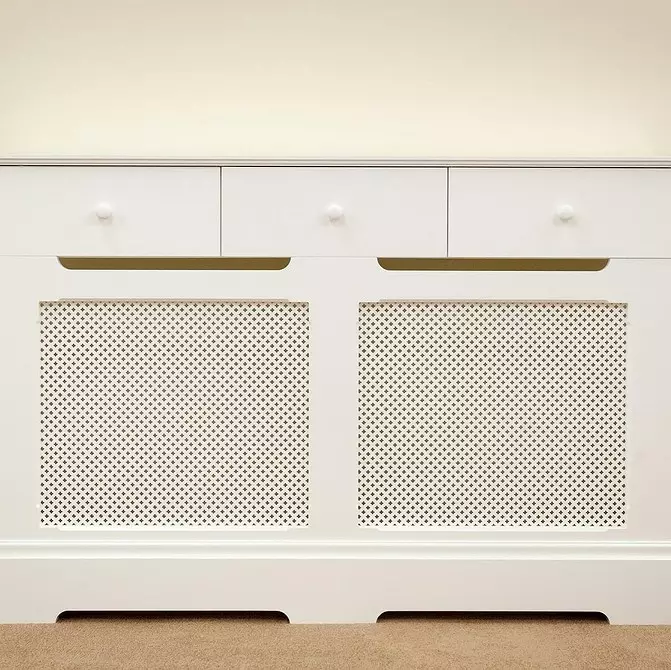
The second important point is associated with the amount of heat entering the house. Any box reduces it. Especially if it is deaf, completely closed on top or has a tight weaving. It is better to choose something more open and not to have a heating device too deep. To reduce heat loss, you can put a solid screen on the legs, and in the middle cut the groove.
Another way to compensate for the heat loss - to establish a heat transfer screen beyond the battery. For example, polyethylene foam.
A few more tips
- Before close the radiator, prepare it: Wash, blow it.
- The distance between the masking structure and the heating device should be 35-50 mm.
- The minimum gap between it and the windowsill, as well as the floor - 60-70 mm.
Take this recommendation when choosing a decorative lining. After it is set, the temperature in the room should not be reduced more than 1-1.5 ° C.
How to close the heating battery with your own hands or finished products
First we will tell about the most common designs.Lattices, panels, lining from various materials
They can be attached, mounted, homemade or purchased. Most often set several varieties of items:
- Metal. Moisture-resistant, heat-resistant products, practically preventing heat exchange. Minus - many models look office, and this will not add comfort to your home. But you can always find an unusual option or order an individual design.
- Plastic. Possess the same advantages as metal. They are easy to install themselves - it will take several minutes. Minus - Over time, the material can darken.
- Wooden. Natural tree looks good even in a simple design, it is environmentally friendly. The disadvantage - the material is quite capricious. There is a risk that the product will fool or, on the contrary, will swell from moisture.
- MDF, HDF (DVP). They are heat-resistant, easily mounted, fit into any room, except for the bathroom. Unfortunately, such lattices do not tolerate long-term contact with water. Therefore, if an accident occurred, the consequences need to be removed very quickly.
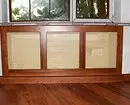


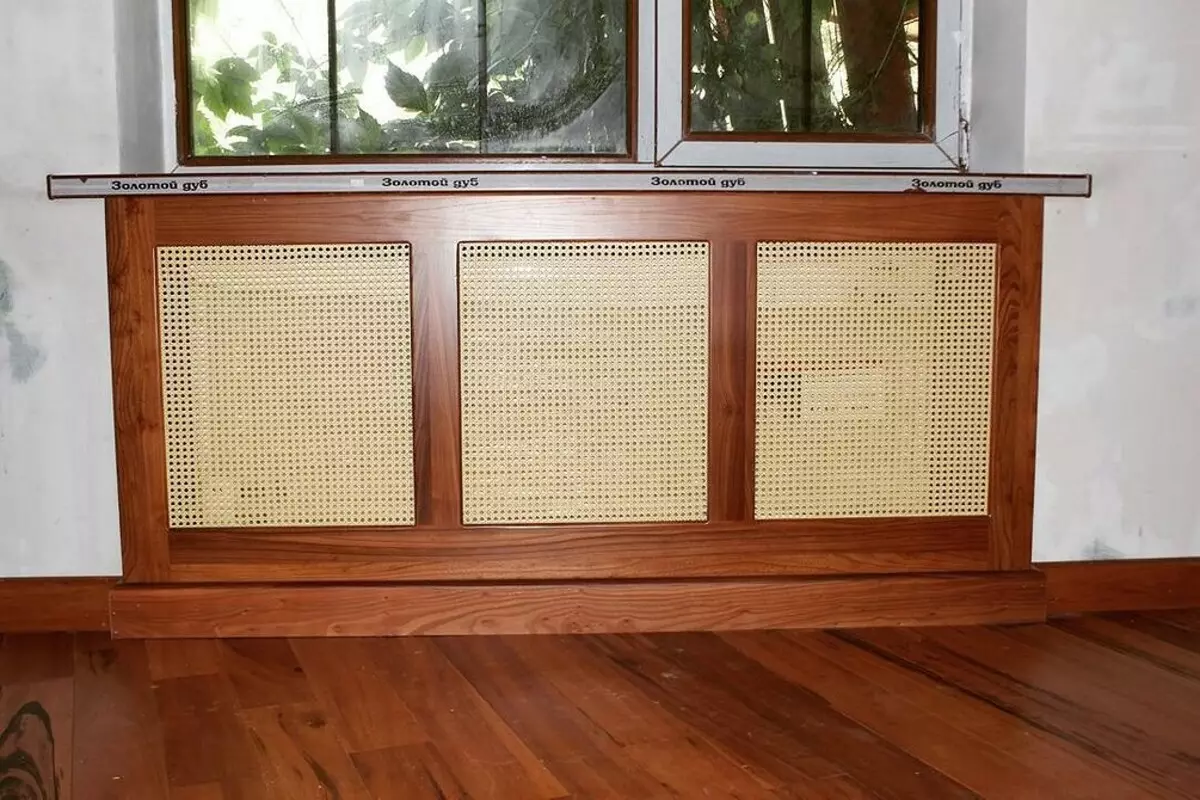
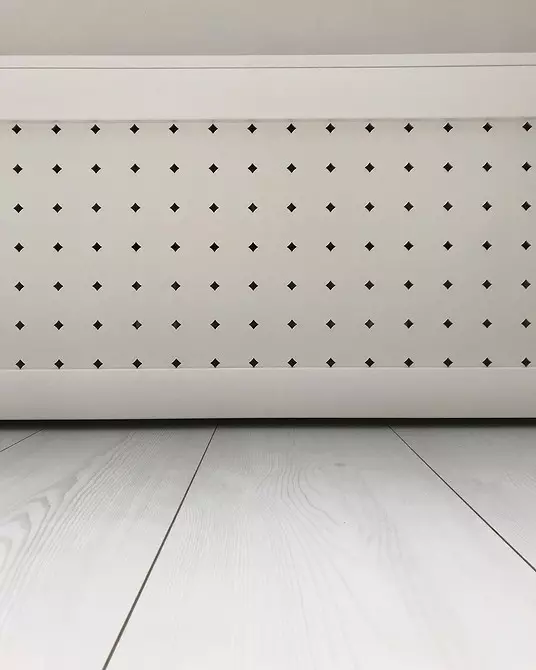
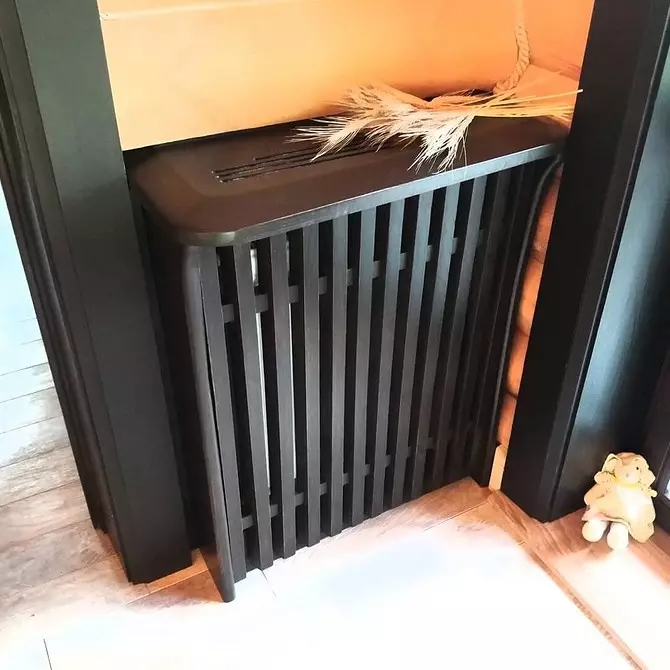
There are also glass screens for heating batteries. They look very beautiful in the modern interior, add to it with air, they are easy to wash. There are also laconic models and decorated with a pattern. This is an excellent solution from a decorative point of view, but controversial with practical. Such a panel is difficult to shoot, it is difficult to install and most importantly - it eats 40-50% of heat. A good option for apartments in which it is too hot.
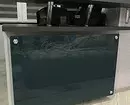

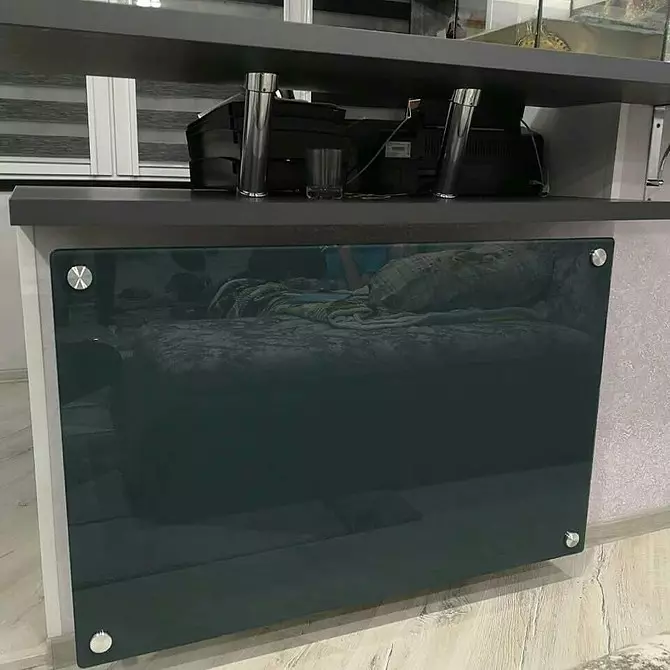
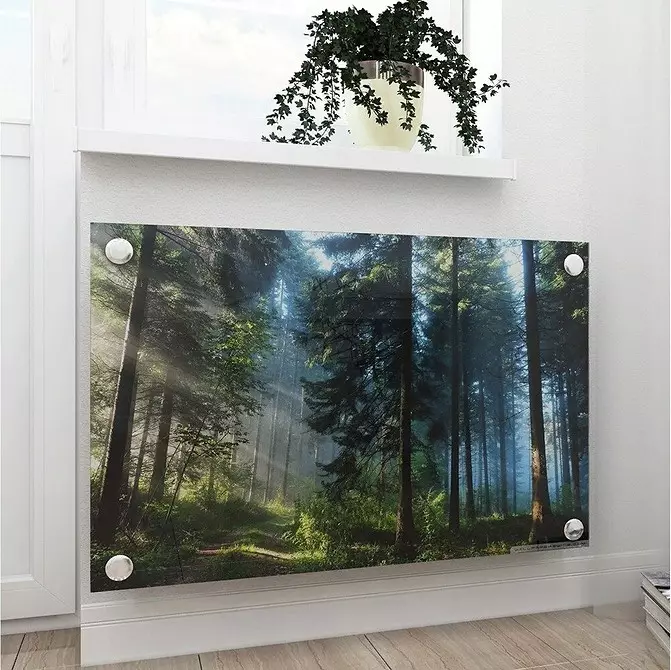
Another material from which screens are made are artificial rattan. This is a grid woven from cellulosic fibers with the addition of a caprony thread. It can be painted, it is durable, beautiful. The disadvantage is not suitable for rooms with high humidity and is more expensive.
Plasterboard
Plumbers do not recommend sewing the radiator in such a box. Especially if he is old and there is a possibility of leakage. To access the device you need to foresee the door or be ready to disassemble the product. True, there are four advantages:
- Moisture resistance, if you buy material with this characteristic.
- No harmful evaporation.
- Low prices.
- The ability to expand the windowsill, creating a niche in a false wall and painting.
But also disadvantages.
- Fragility. GLK is difficult to call impact-resistant - in case of damage, you will have to change the entire skin.
- Bulkiness. The box eats space under the windowsill.
- Duration of installation. It will take at least two or three hours.
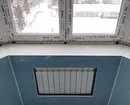

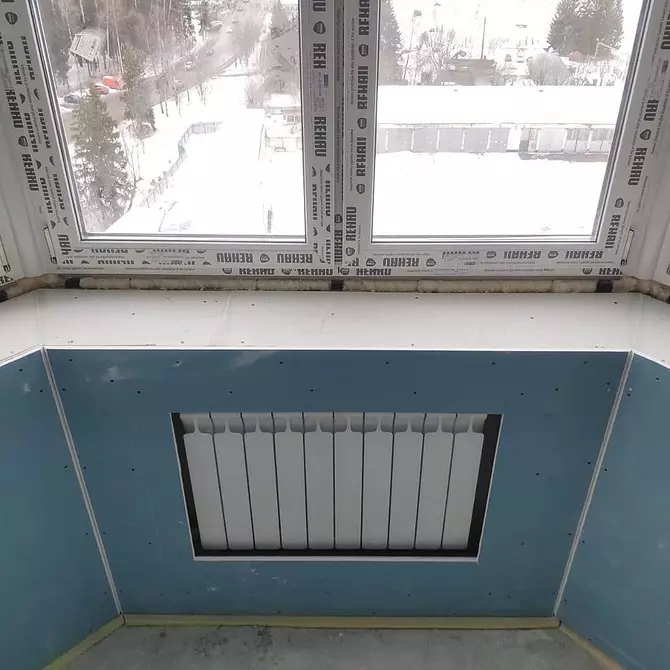
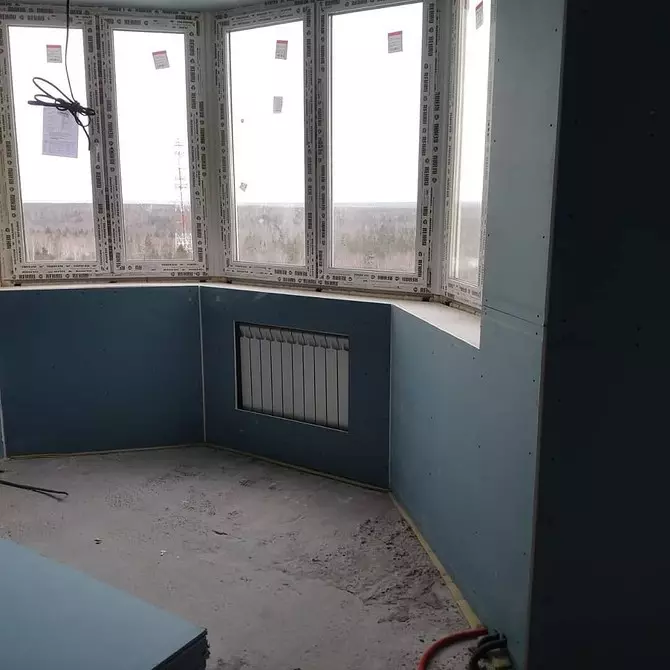
If you still decide to use this material, here's instructions, how to close the battery in the room with it.
The preparatory stage consists of cleaning and purging the heating device, as well as collecting tools. List of what will be needed for work:
- Glkl sheets 12 mm thick.
- Pencil.
- Roulette, ruler, level, corner.
- Liquid nails, screws, dowels.
- Metal profiles 2 sizes: 27 * 28 and 60 * 27.
- Screwdriver, perforator, screwdriver.
- Construction grid with self-adhesive surface.
You can disguise the entire wall or only a part under the windowsill. The box is installed in the floor or leaving the gap over and under it. When marking, it should be borne in mind that the edges of the design must be at a minimum battery by 10 cm.
- Make marking on the wall.
- Cut the profile to the lines, make tags under the holes in 15-25 cm increments.
- Drill holes and attach a profile 27 * 28, and then jumper 60 * 27.
- Make marking on drywall, cut it with a stationery knife, attach to the frame to the frame.
- The seams between the sheets are filled with putty with the grid. Sheets themselves also put off and color.
- To reduce heat loss, the wizard is recommended to drill on the surface of the hole in as many as possible.
Another, visual instructions on the trim GLC on video.
Painting
One of the simple ways to design a radiator. Suitable for cast iron and steel panel structures. Modern aluminum models will be difficult to paint. There will have to apply a lot of layers, and the result will be unattractive. You can make them in monophonic, pick up the interior, contrast or create a beautiful drawing. In this case, stencils from art stores, decoupage technique will help.
Water-dispersive, acrylic and alkyd paints are suitable for work. All of them are resistant to high temperatures. Acrylic will dry faster, almost do not distinguish the unpleasant odor. Alkyd, on the contrary, are distinguished by caustic evaporation. This shortage is devoid of water-dispersion formulations, but they are less durable, quickly erased, scratches appear on them.


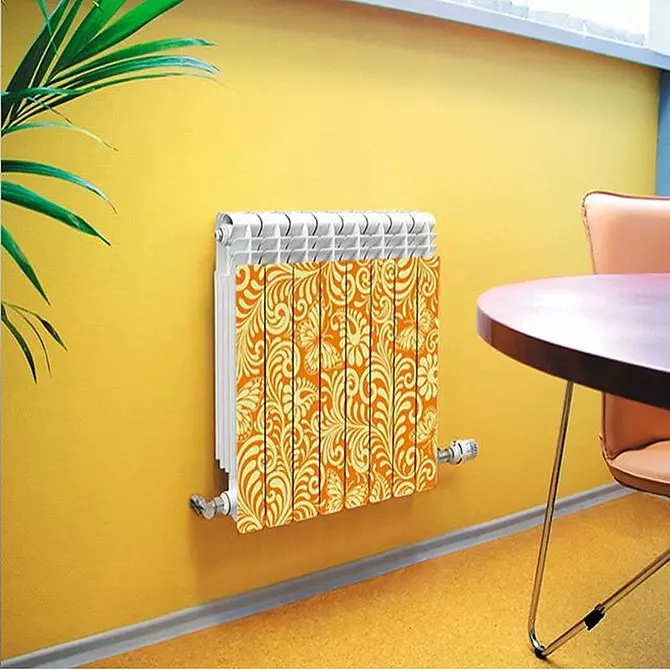

There are hammer paints for metal. They create inhomogeneous texture with the effect of chasing. This is a good option if you need to hide the various defects of the old surface: chips, cracks.
Start painting needed from the preparatory stage:
- Clean the surface from dirt. Dust, tempered inside, washed off by a brush with a pulverizer.
- Remove the paint applied earlier. This is made with a seamy solution, a drill with a brush or a construction hairdryer - it melts the layer and can be removed with a spatula.
- Buy two small brushes: straight and curved for the inside of the heating device or foam roller for the panel radiator.
- To block the receipt of boiling water, wait for cooling.
In addition to the listed tools, you will need gloves, safety glasses, respirator or gauze bandage, newspaper or oil to protect surrounding surfaces.


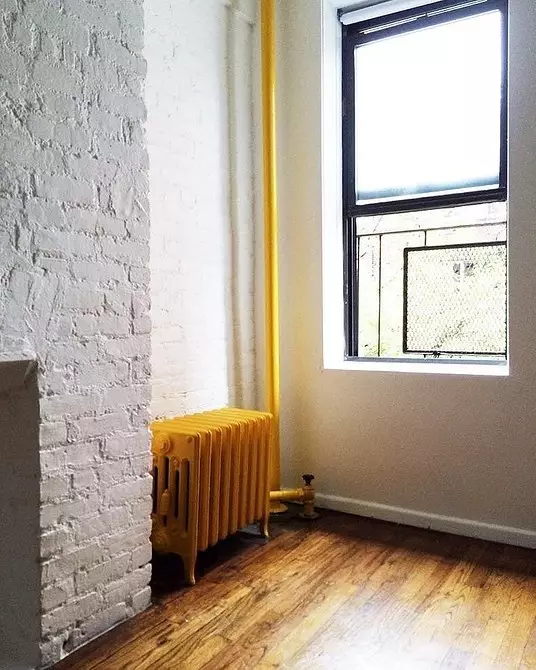
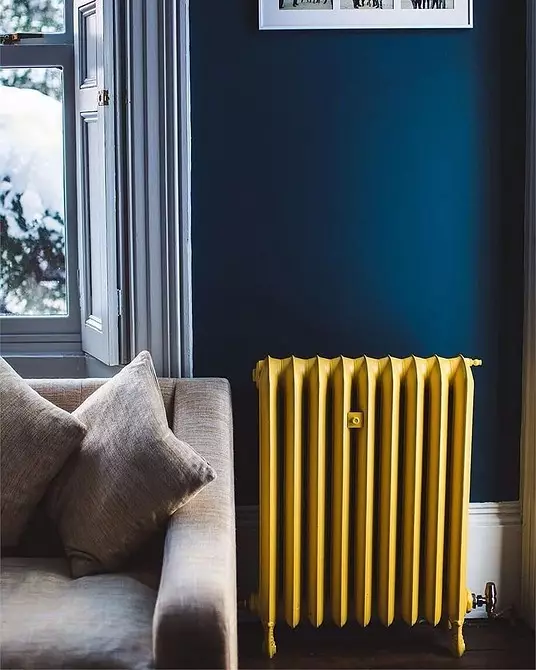
the cloth
It is even easier to reorganize the battery with small curtains suspended on a velcro or a fishing line under the windowsill, or window curtains to the floor. The first option is especially successful in the interiors Provence and Shebbi-Chic. Homemade covers with bright print or appliqué are appropriate in the children's room. Here are the advantages of this screen:
- It is inexpensive.
- Almost does not reduce heat transfer.
- It can be often changed depending on mood or new repair.
- There are quick access to heating in case of an accident.
The last plus is a light fabric looks not as cumbersome, like plasterboard, metal, wood, MDF. The only negative is that such design is not suitable for apartments in minimalist, high-tech or classic style.
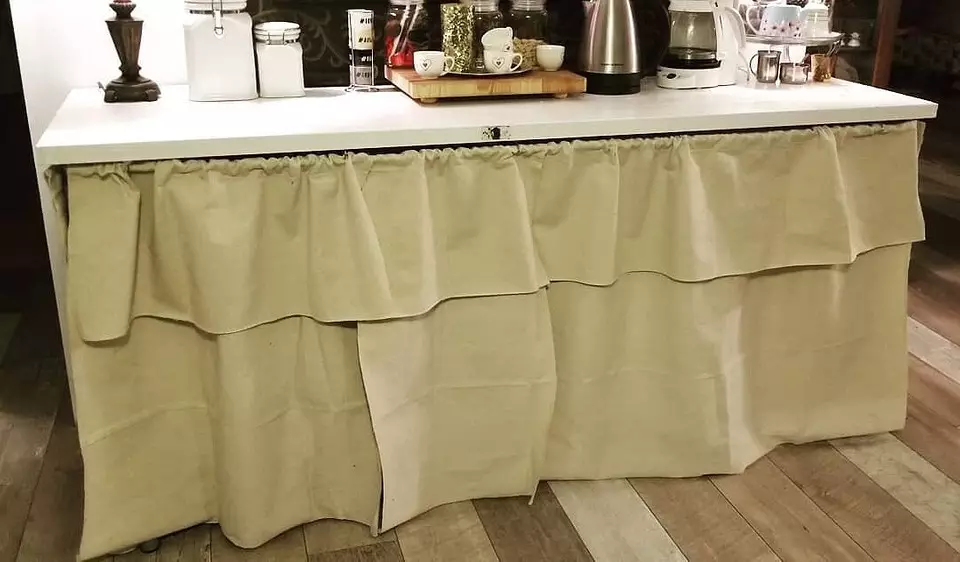
Furniture
The radiator can be hidden in furniture. The easiest way is to make a permutation and close it with a sofa or table. At the same time, the distance between items should be at least 10 cm. In the kitchen, heating is often masked by a windowsill-countertop. It is expanding, and below the locker with the doors. In addition, the device can be embedded in a bar rack, a folding table (the option is inconvenient by overlaps heat), rack, headset, bench, console. The main condition is to ensure air circulation. To do this, on the facade you need to make holes.
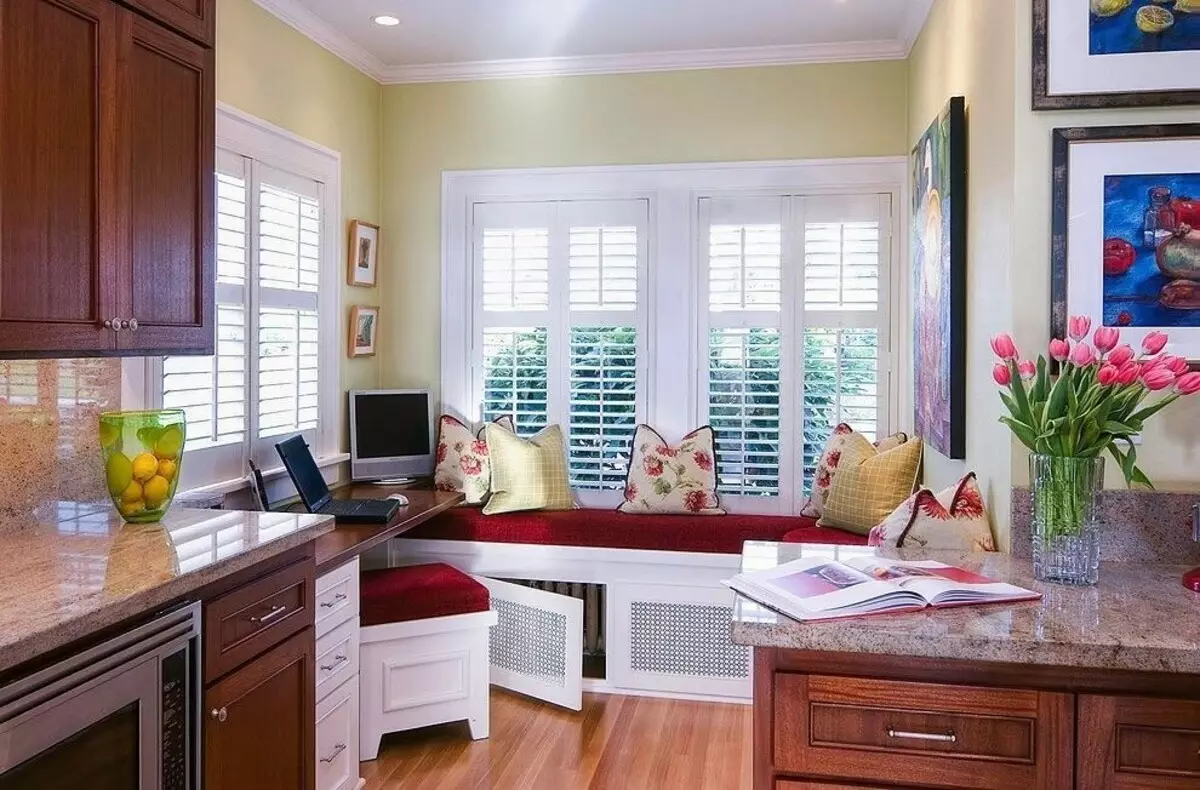
Niche
The way for apartments in which it is still installed a heating system. The radiator in this case is inside the wall. This complicates the repair, eats the space if a niche is used to build a niche, but at the same time the room will not become colder.
Grid
The option is suitable for the bathroom. The shelves are screwed on top and bottom of the heating device, and the grid is fixed on which any objects can be hung.Screen
A low ornamental, carved or ordinary partition will also hide a bulky object. You can pin up photos, drawings, useful notes.
How else can you close the batteries: photo of simple and unusual screens
In addition to the listed structures, a laundry dryer, decorative fireplaces, wrought iron, brickwork are used to mask the radiator. Watch the photographic formation of interesting decorative solutions.


